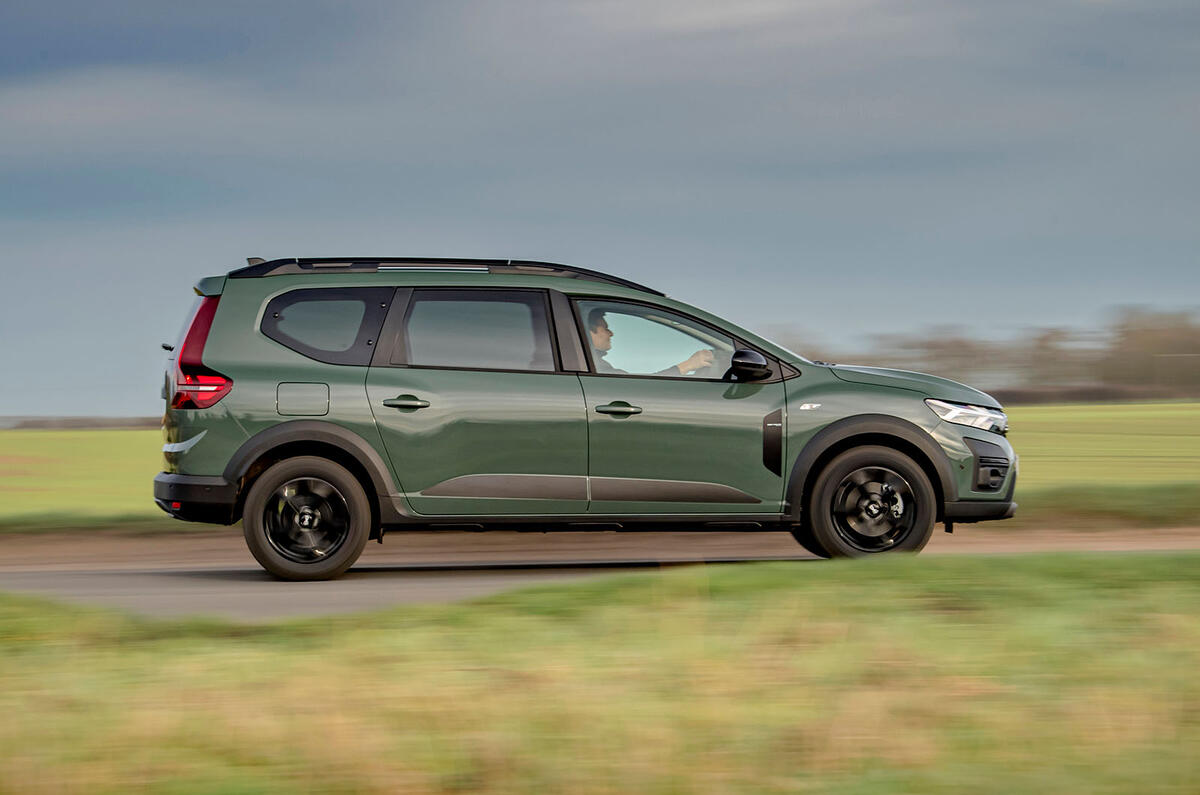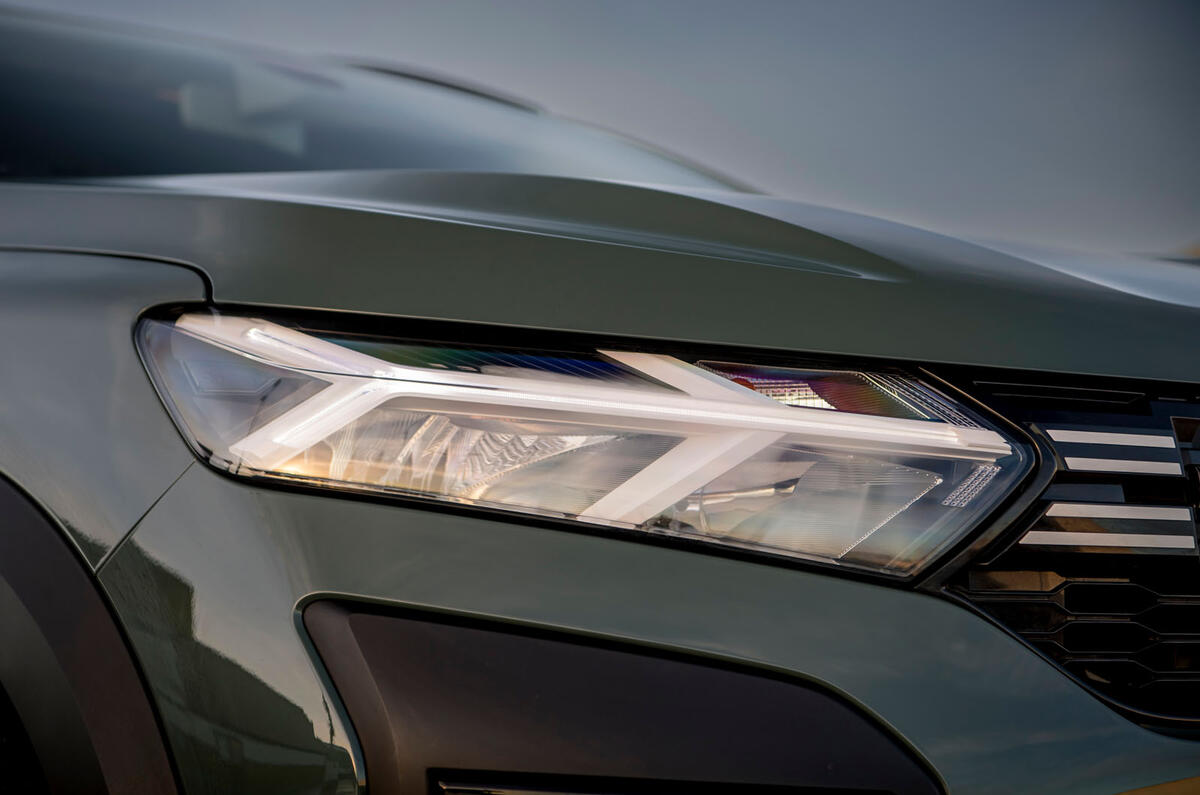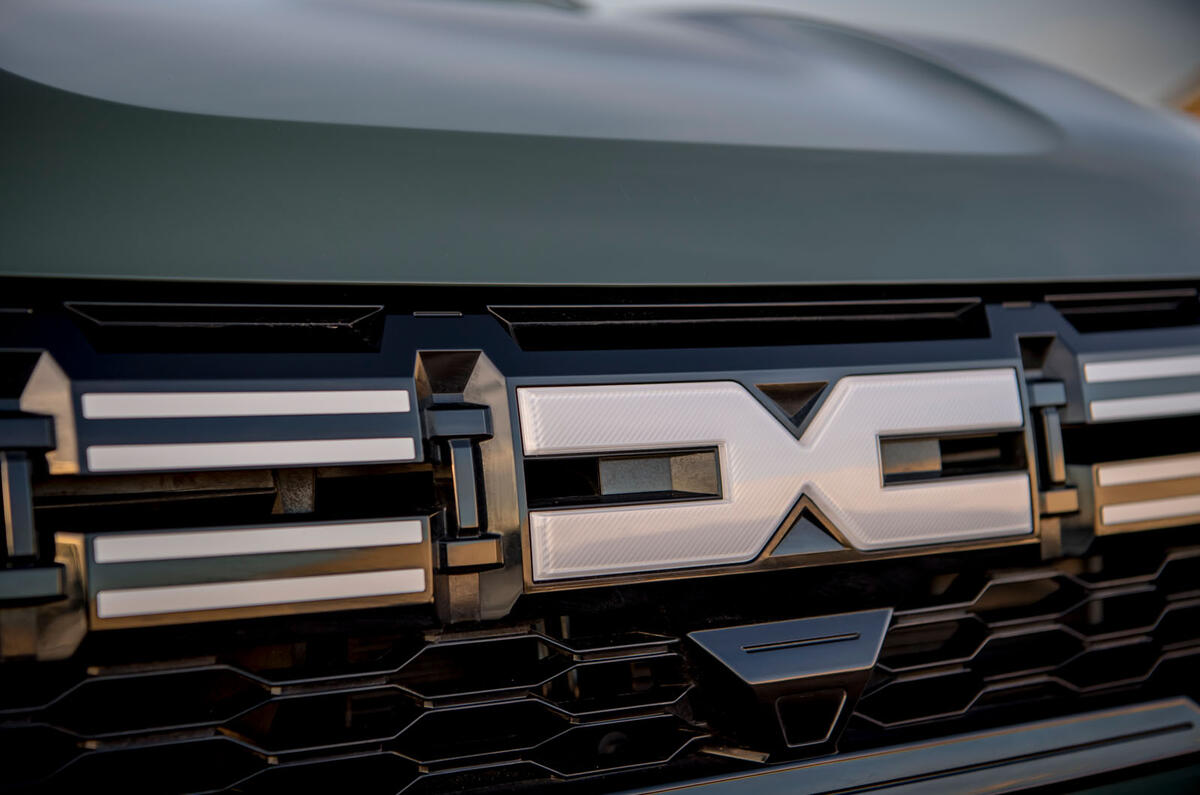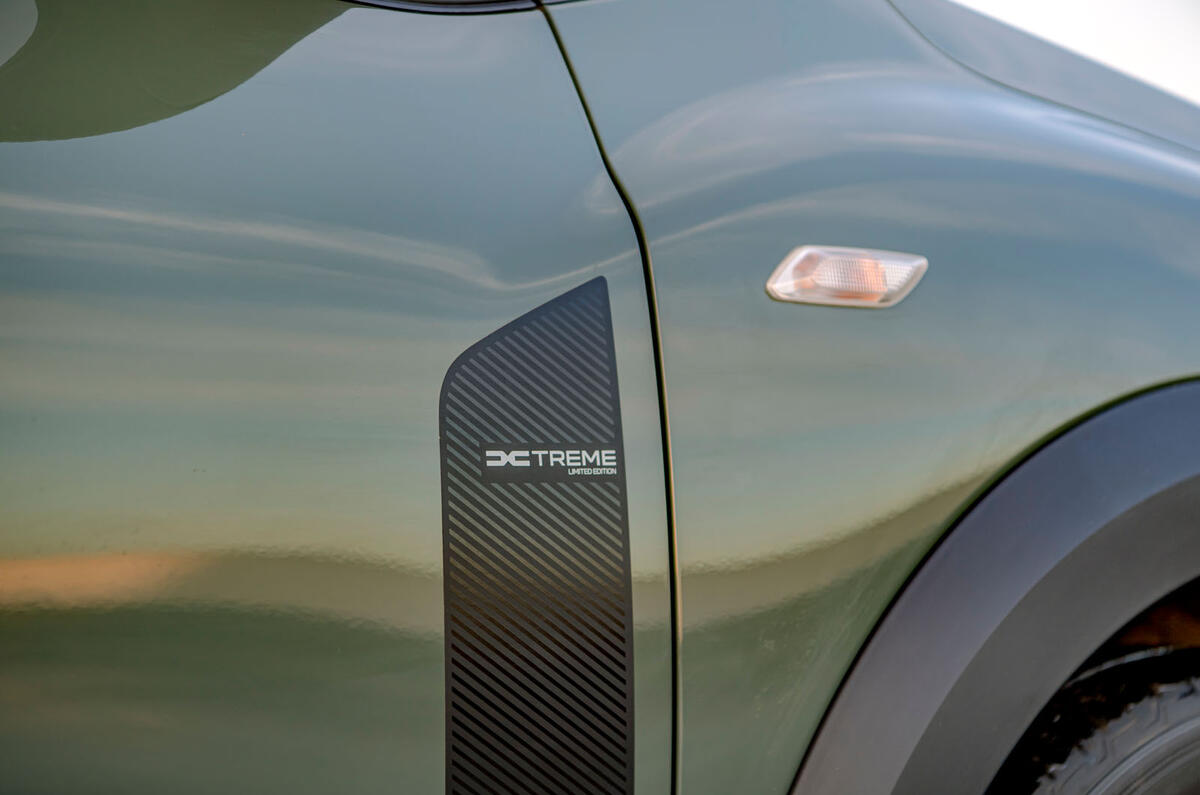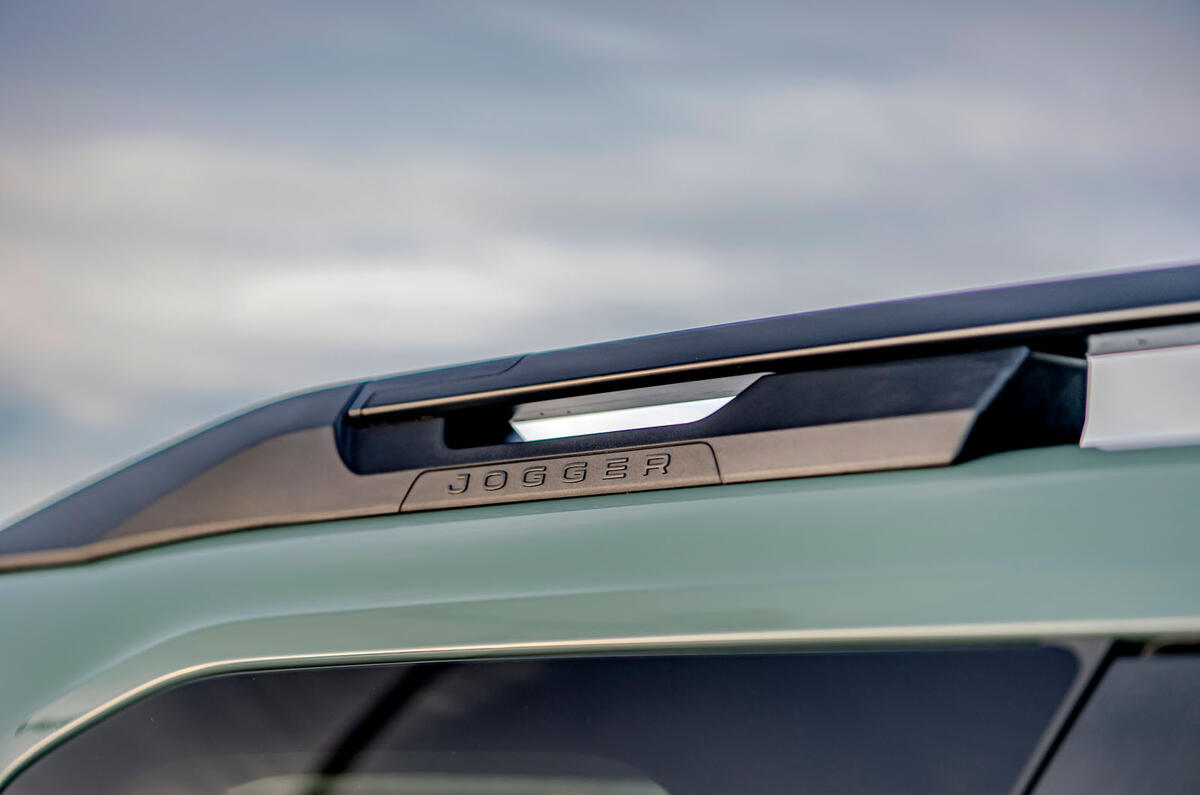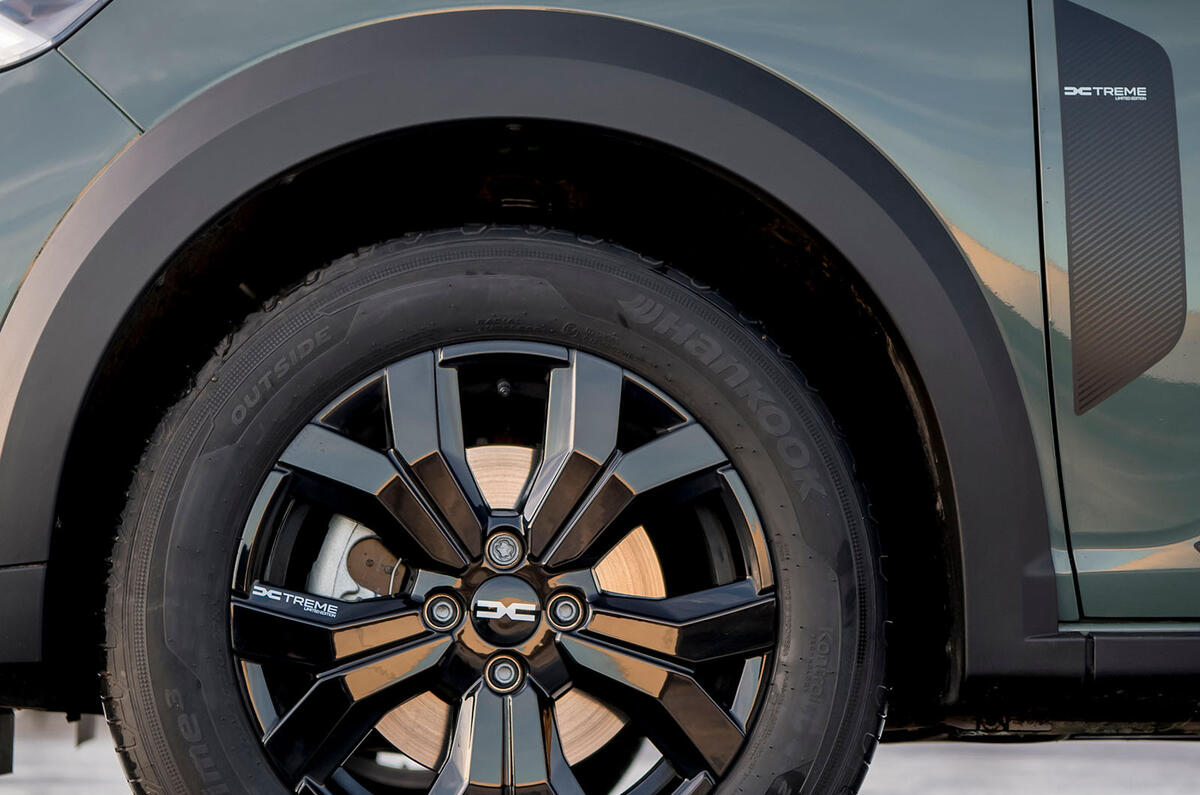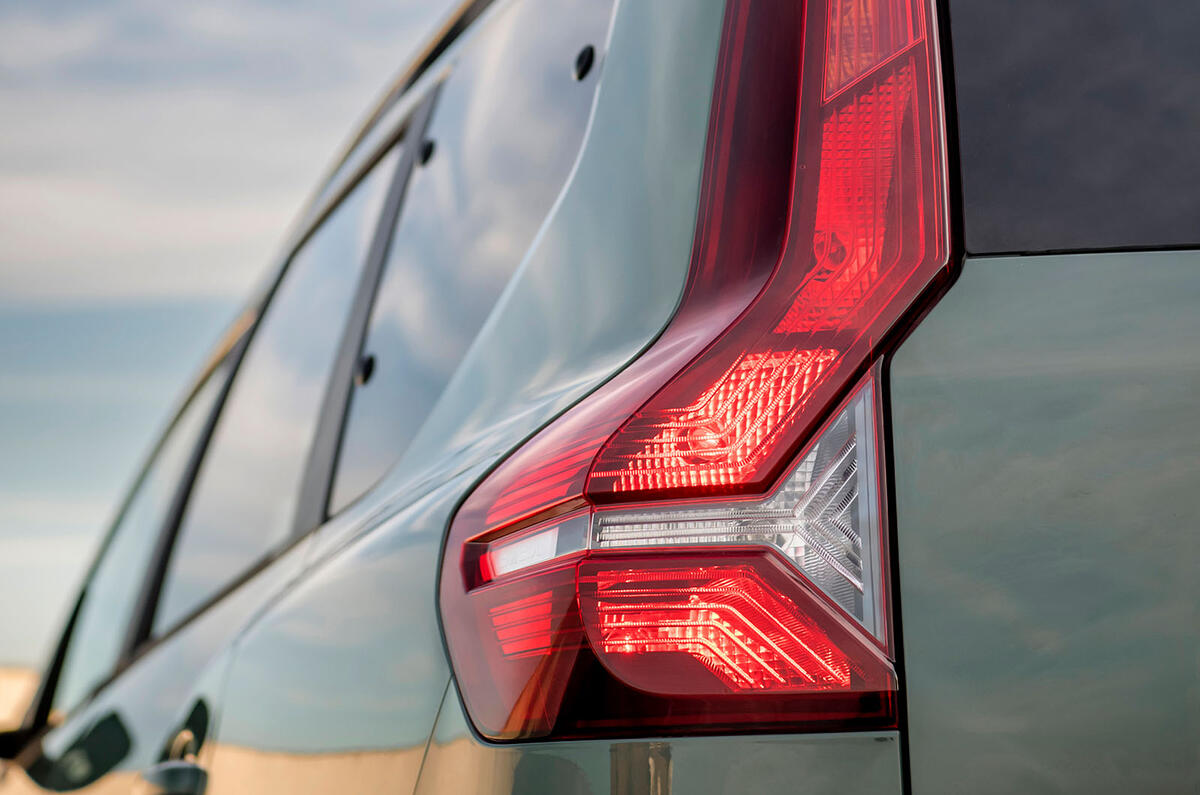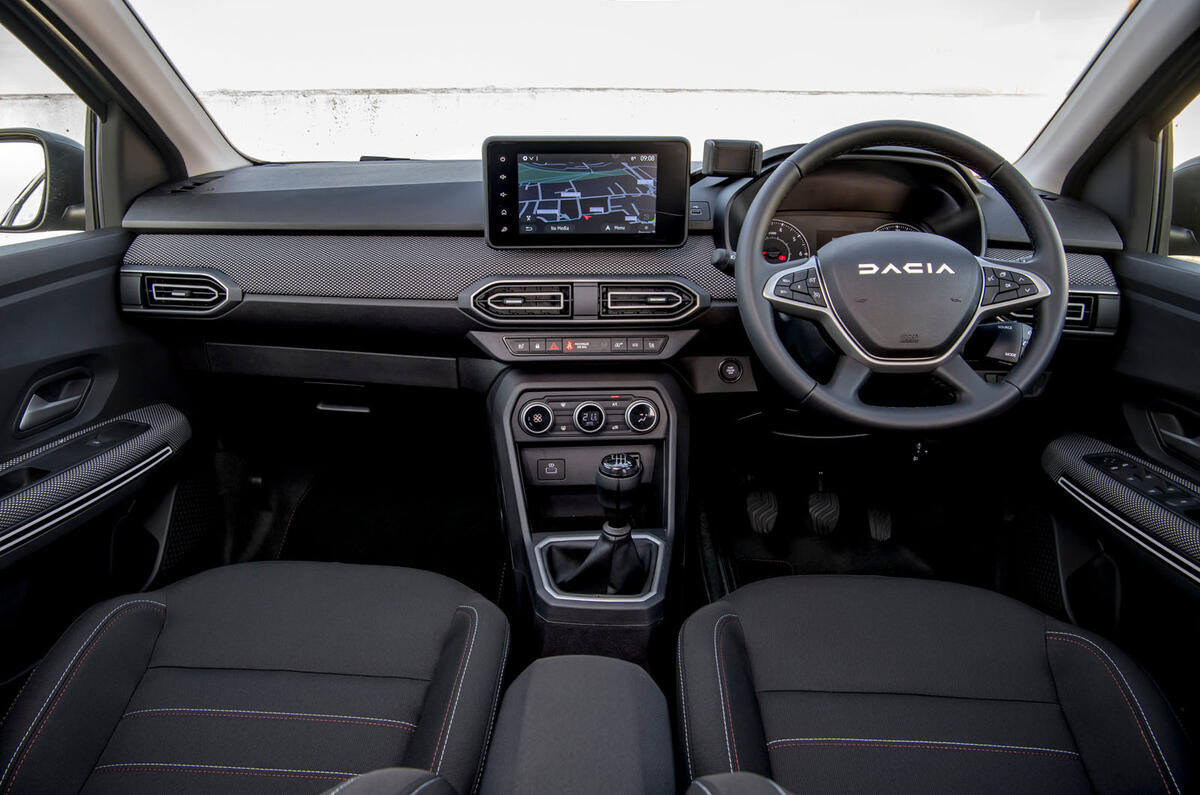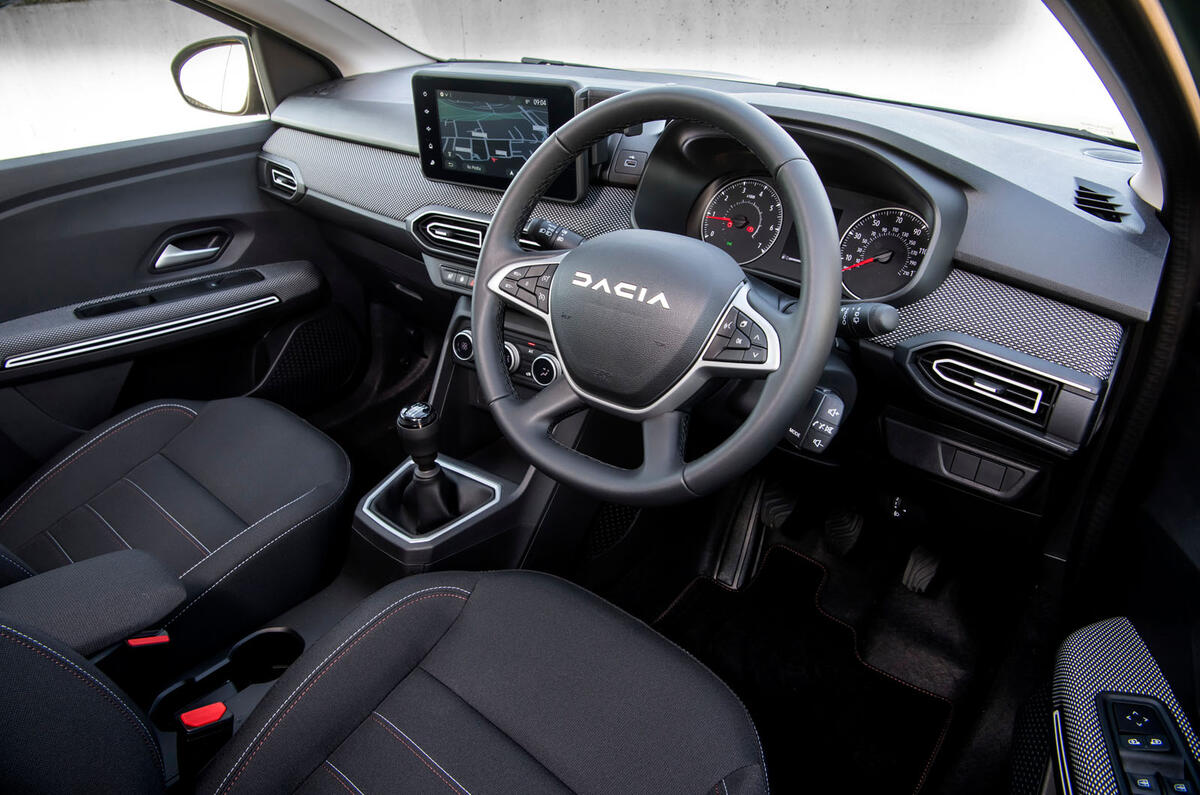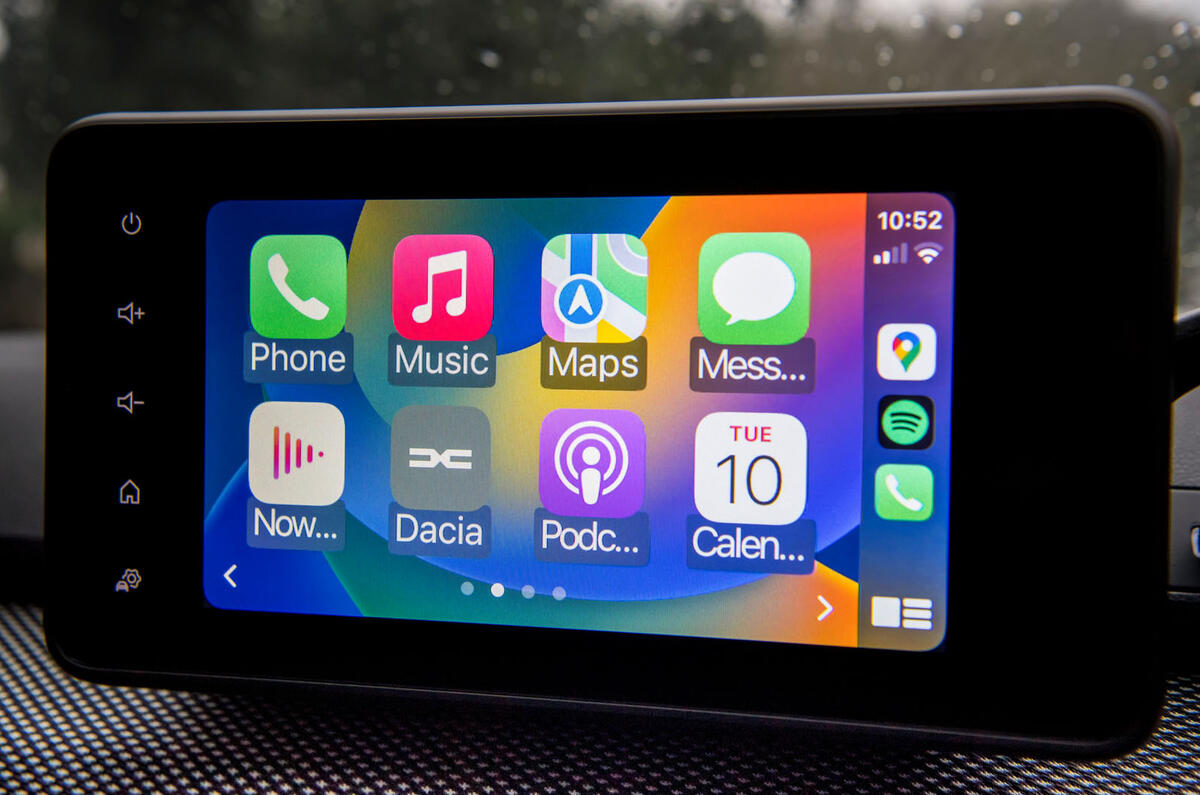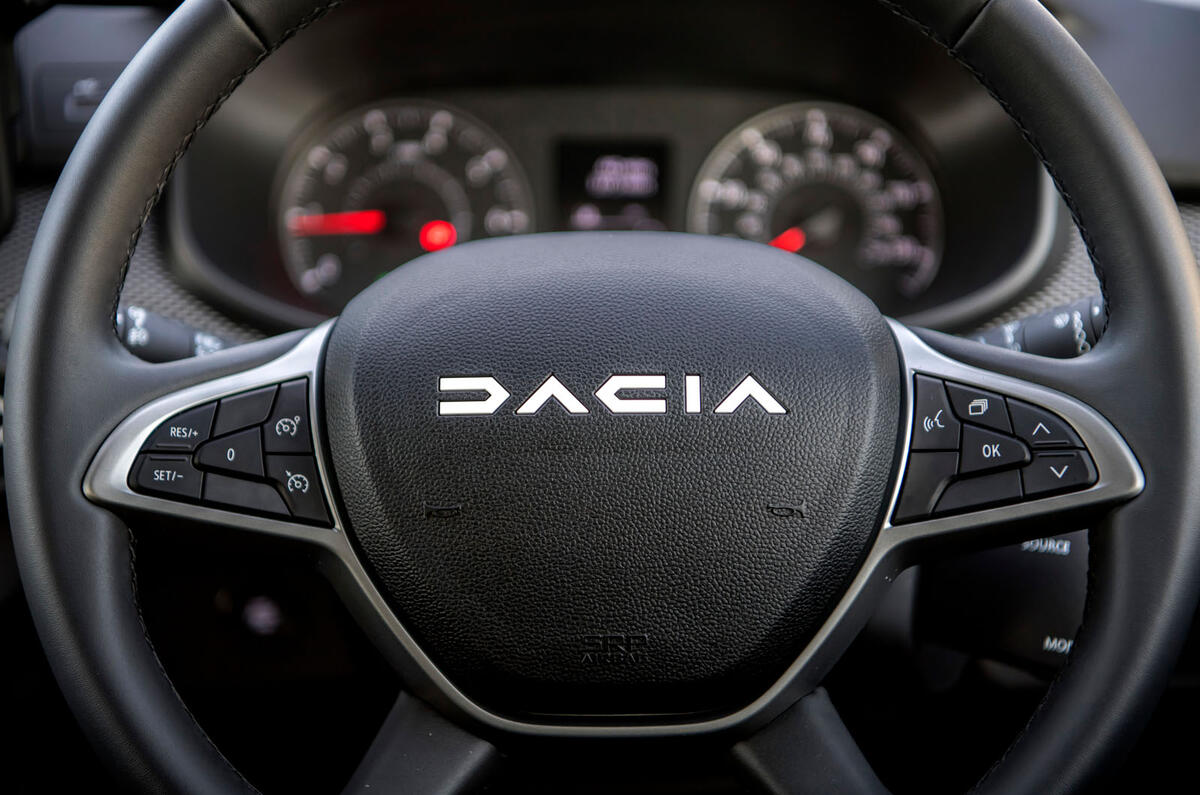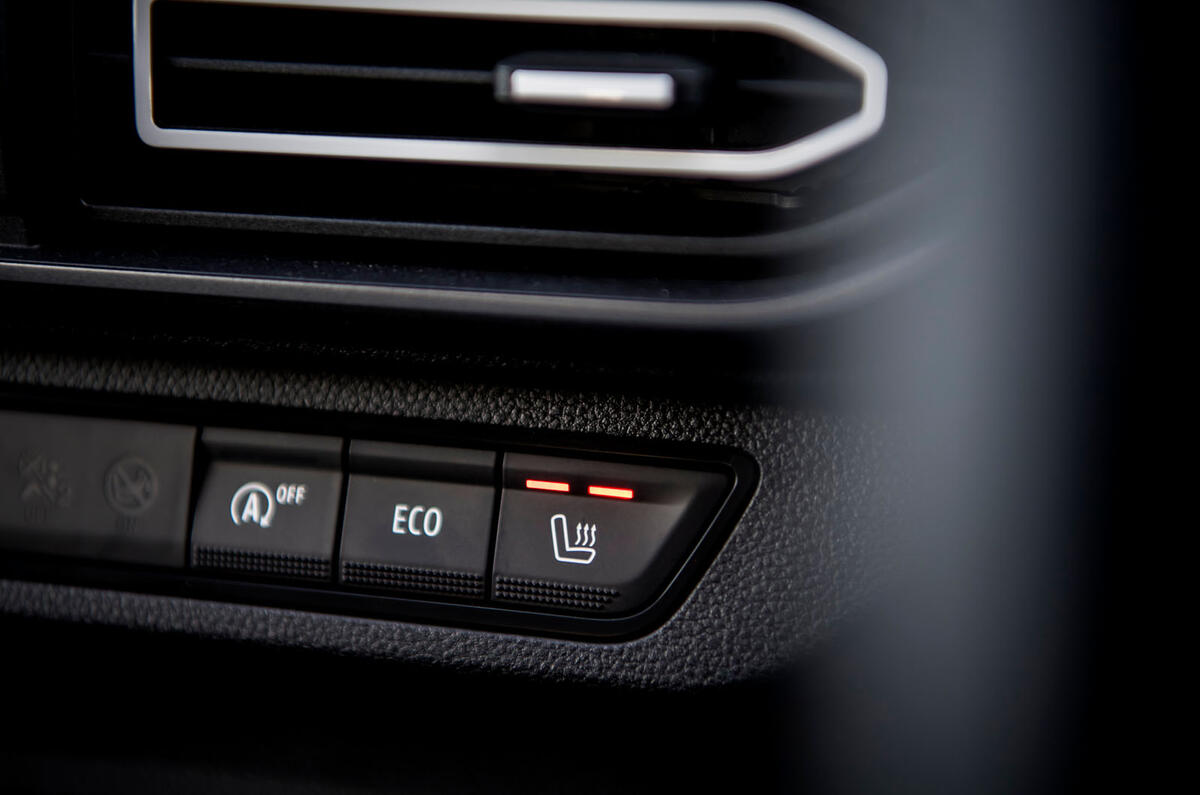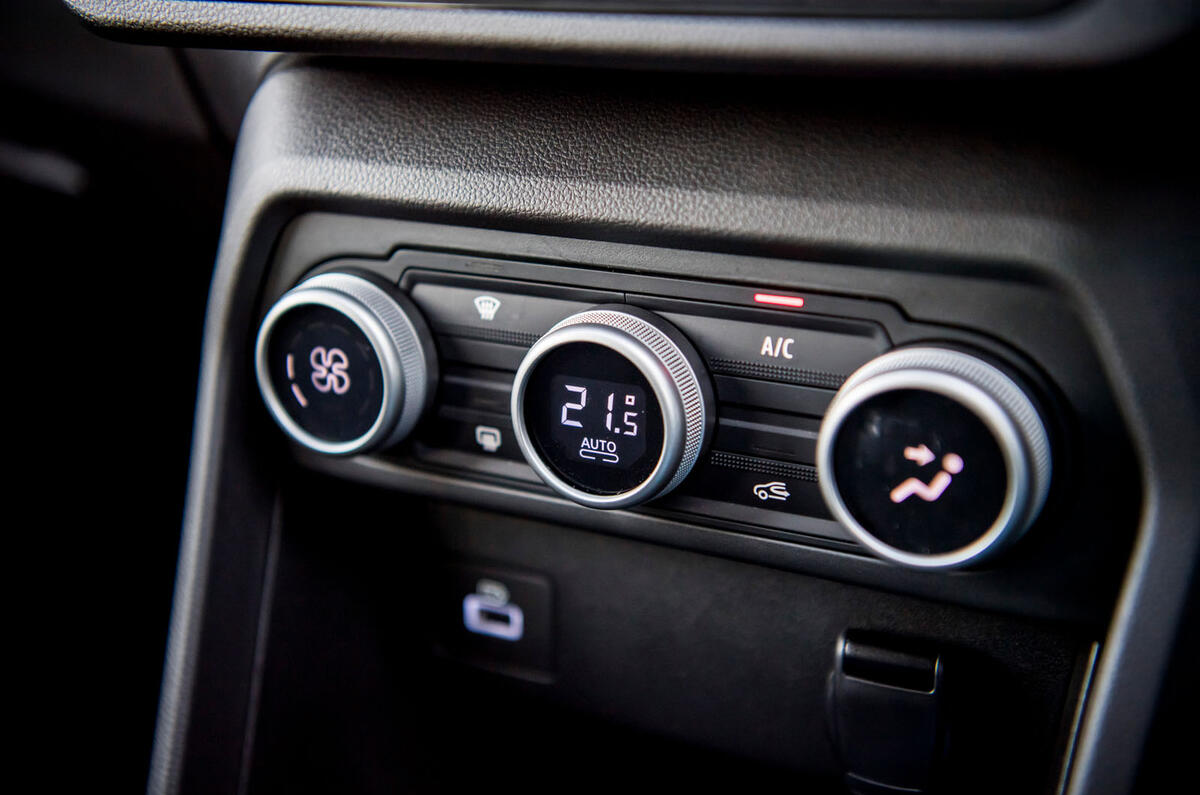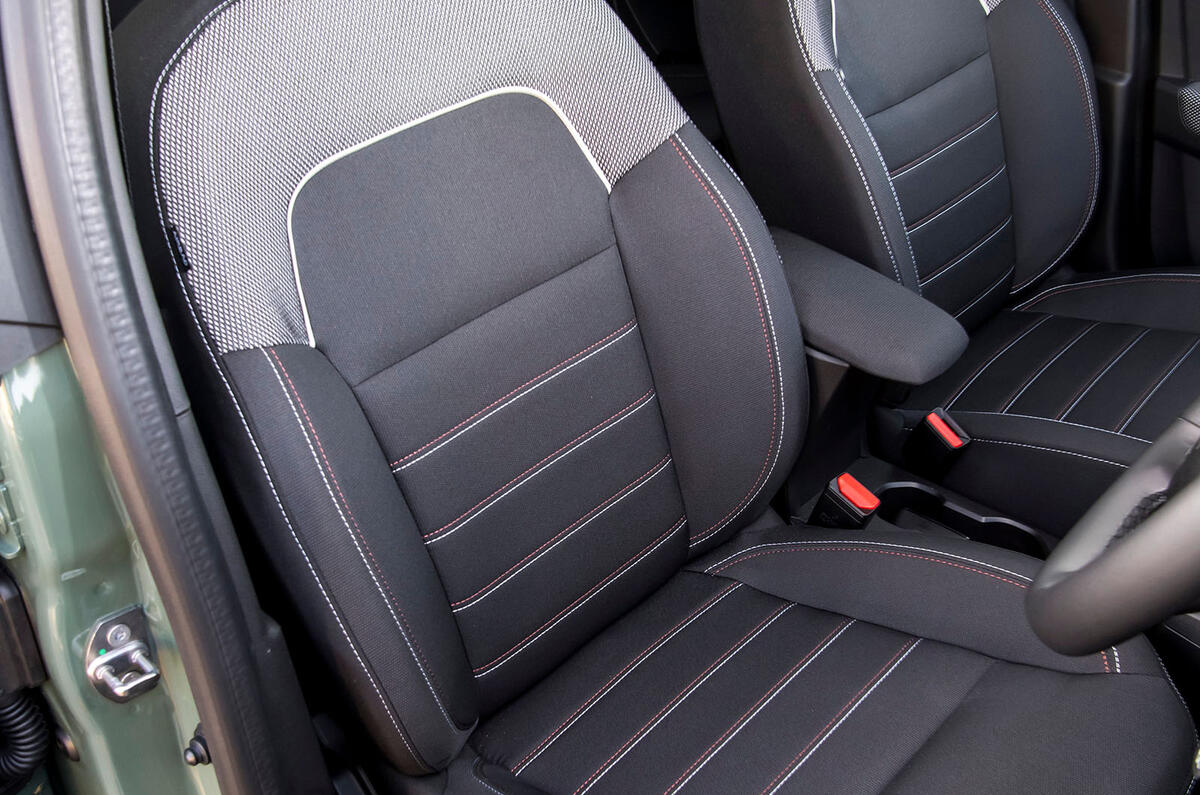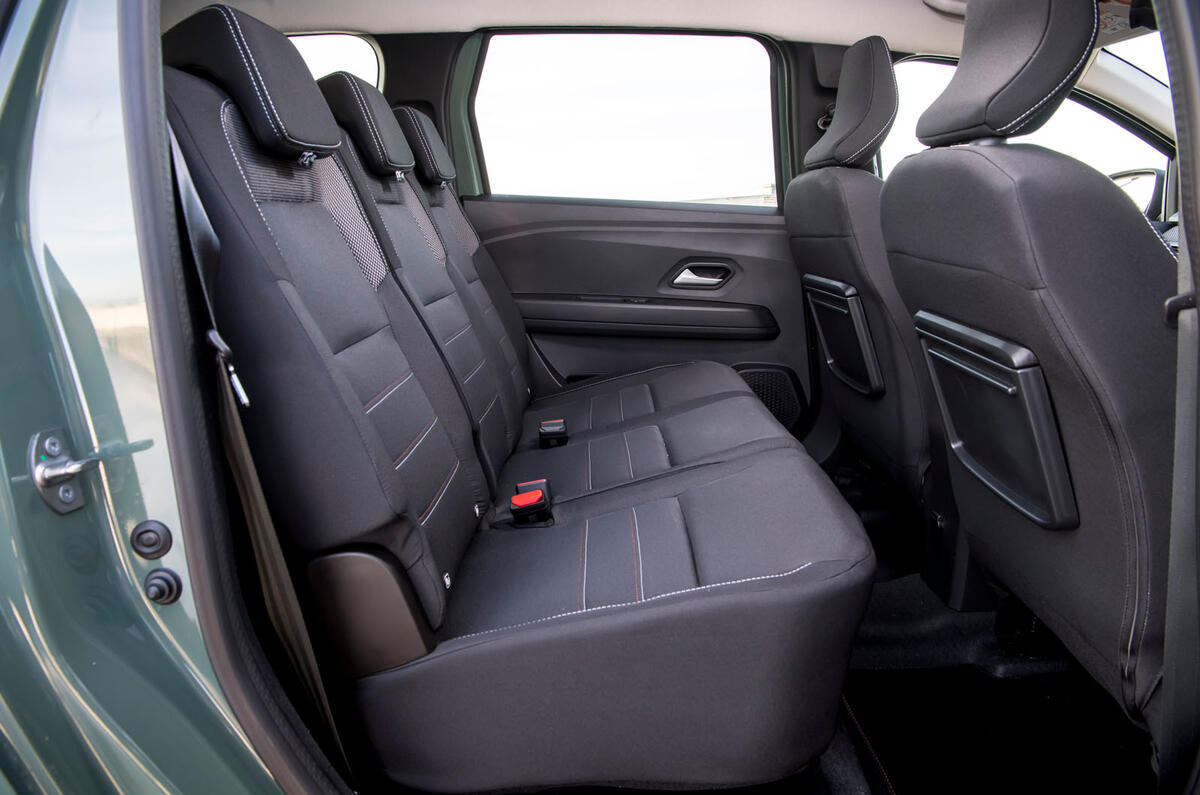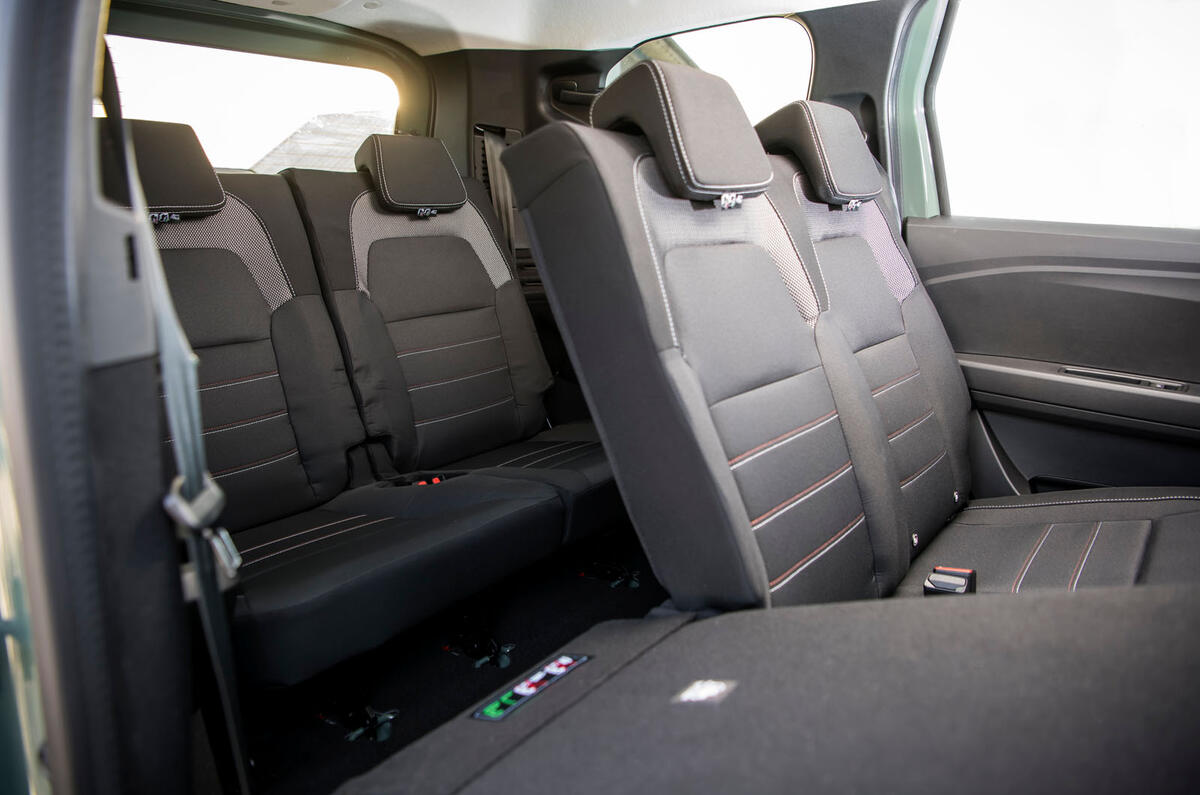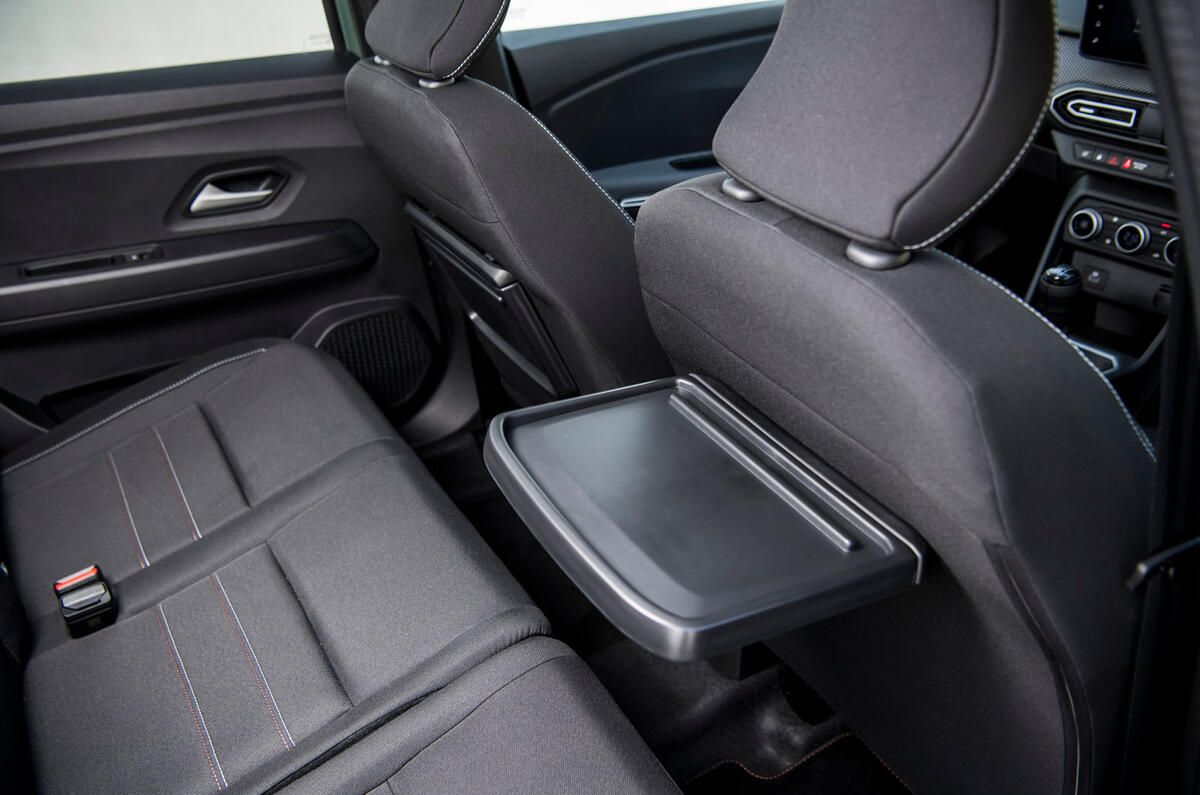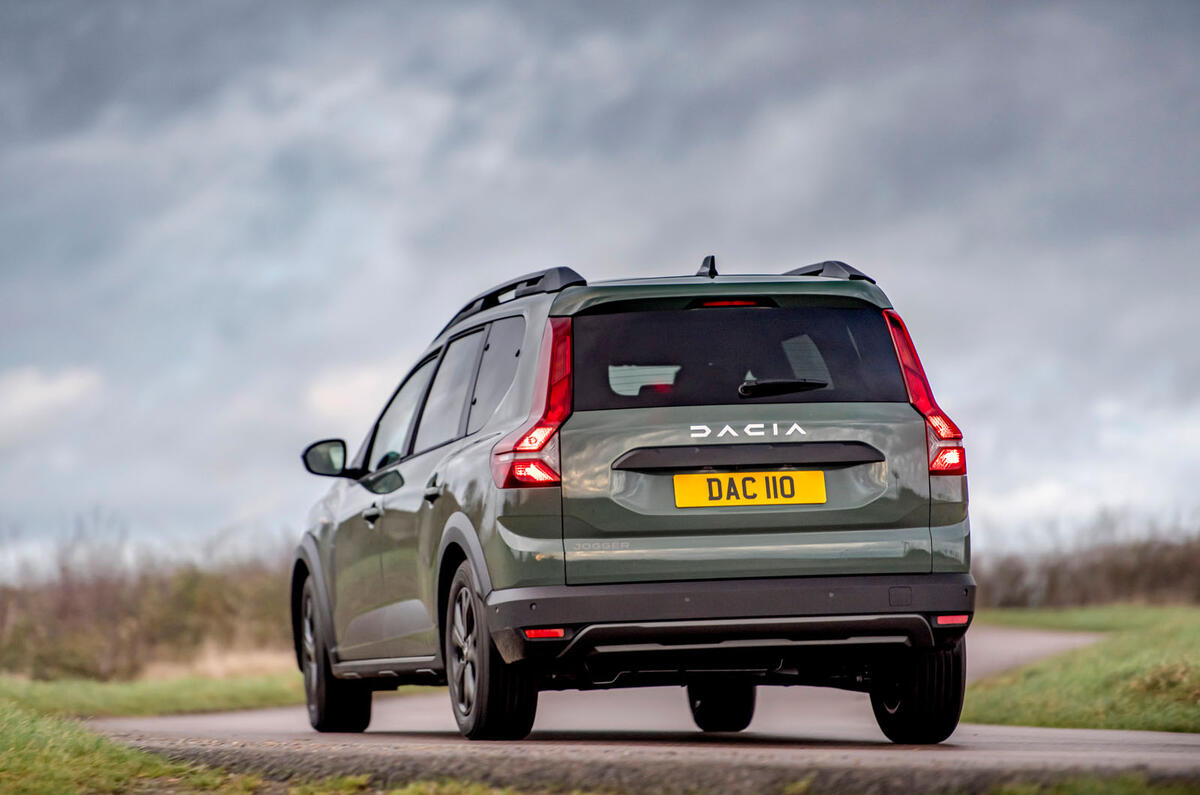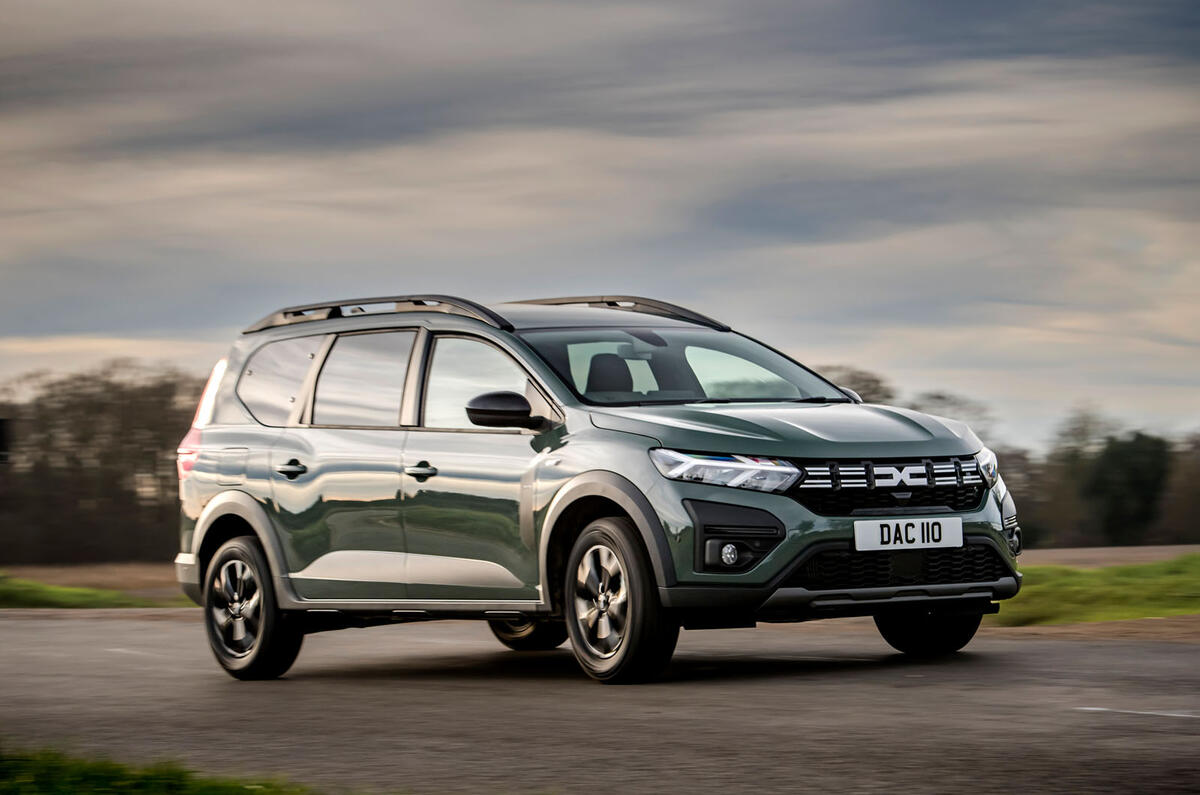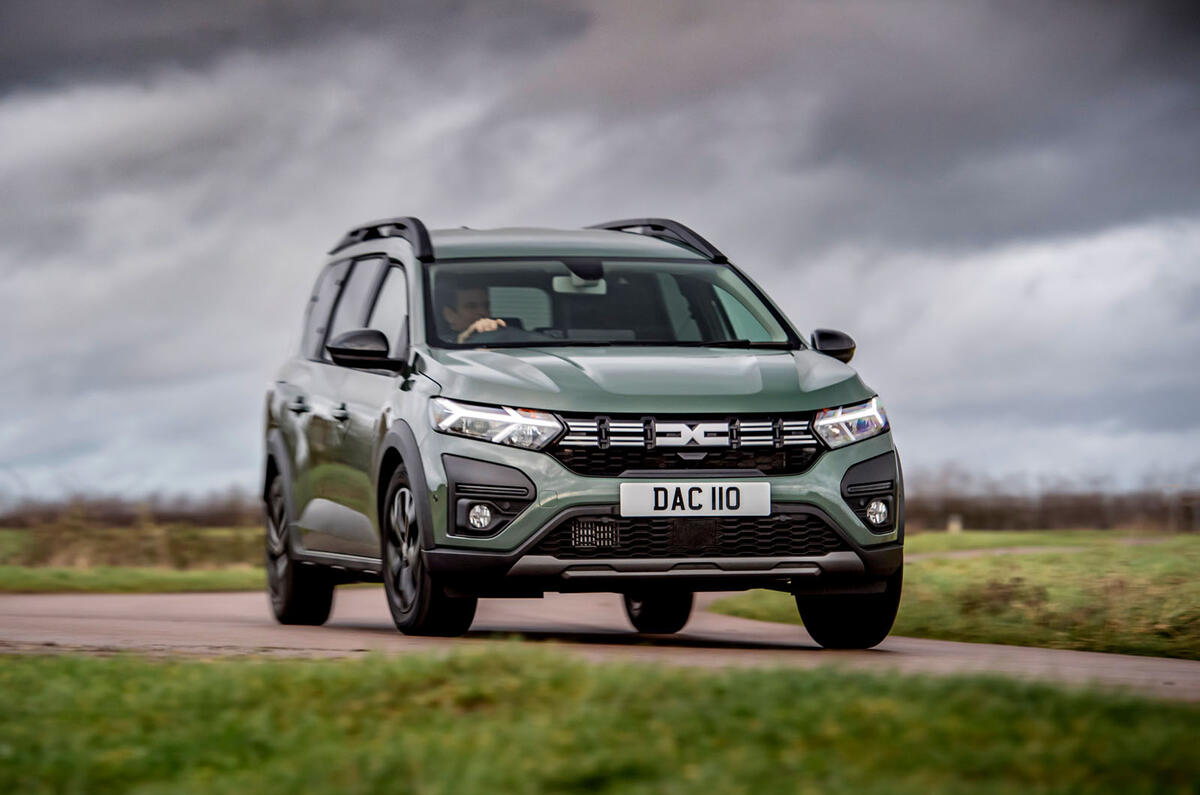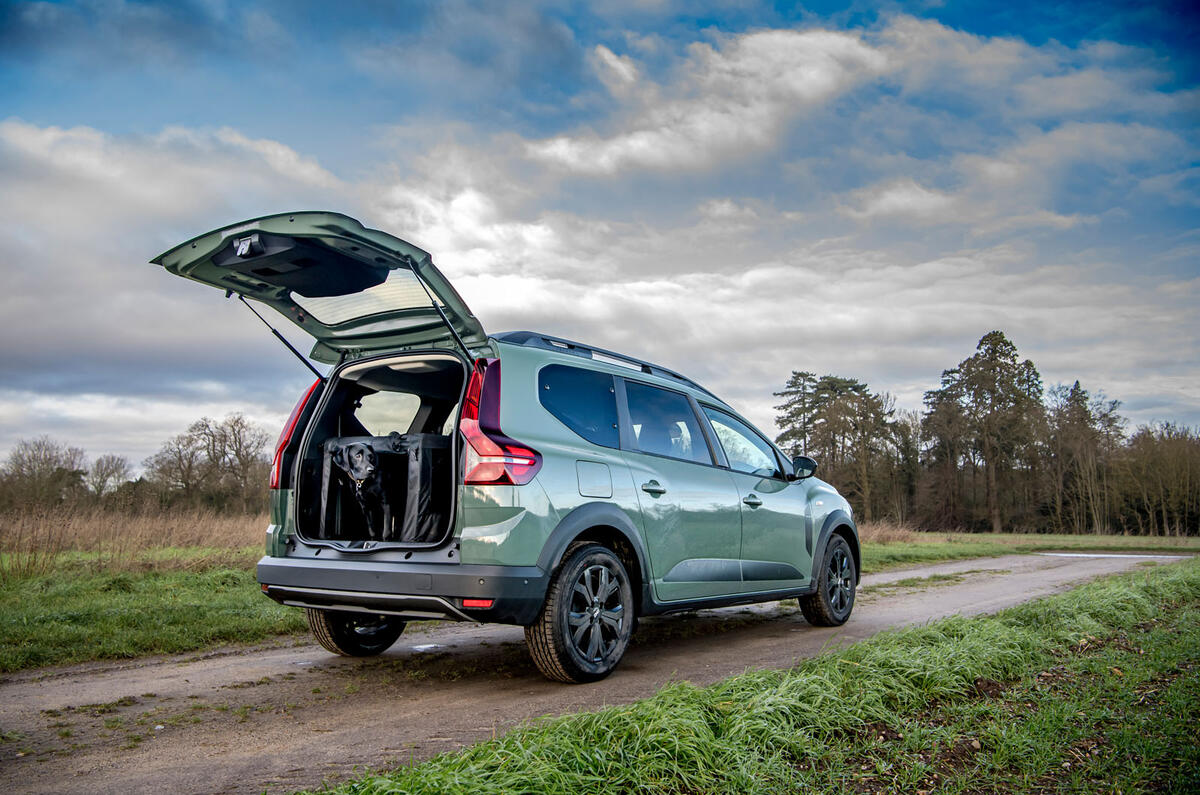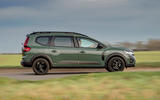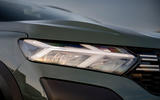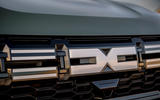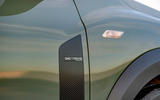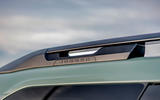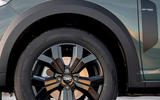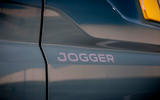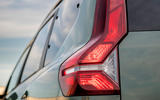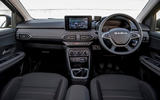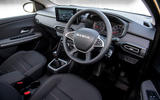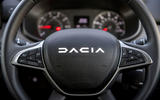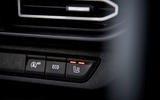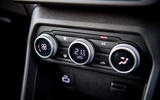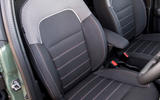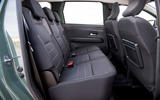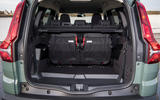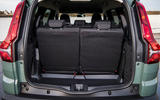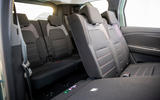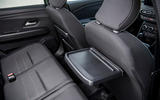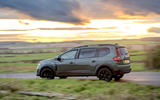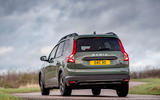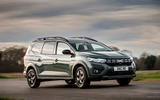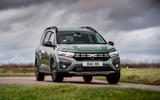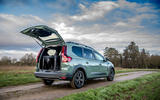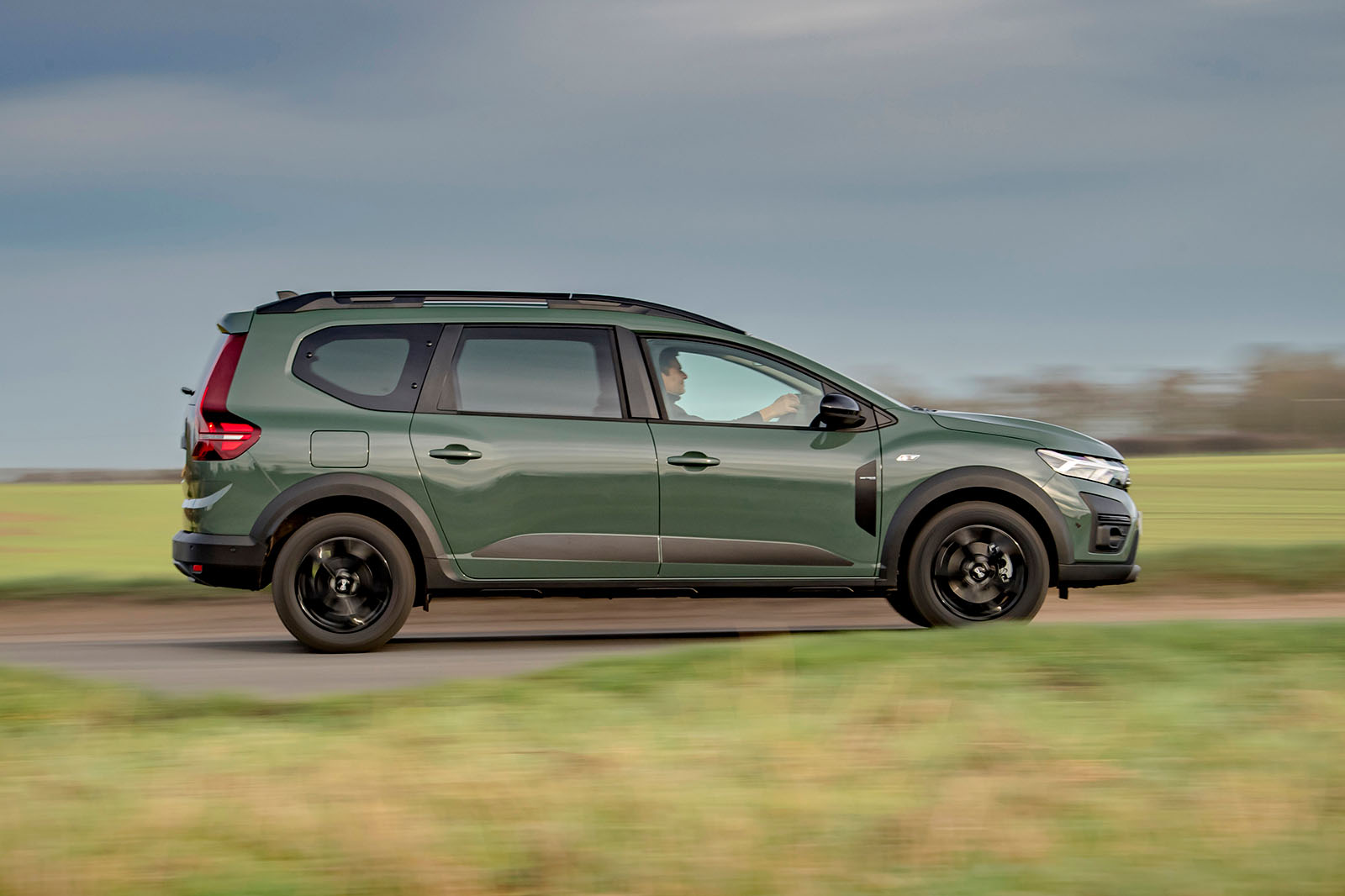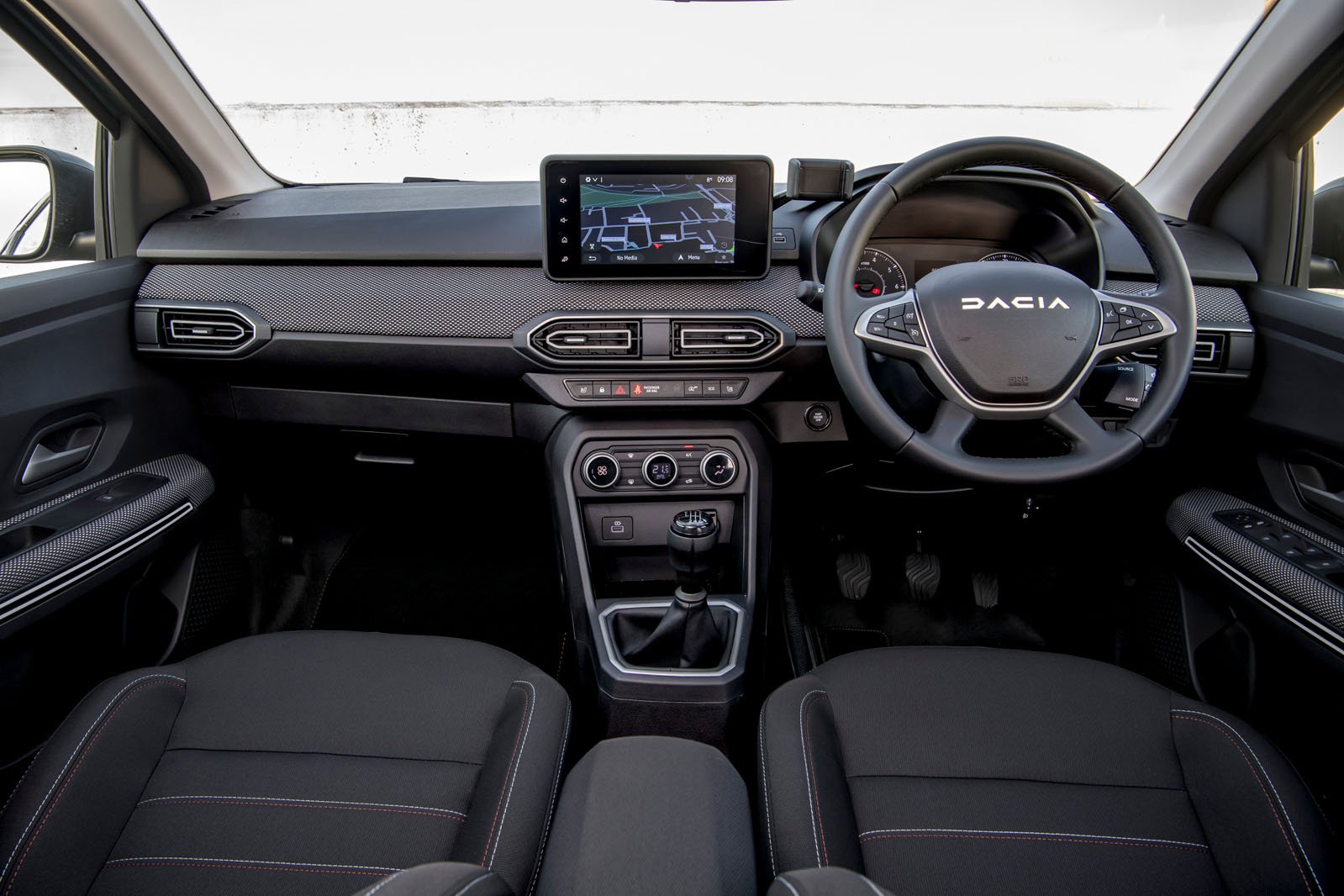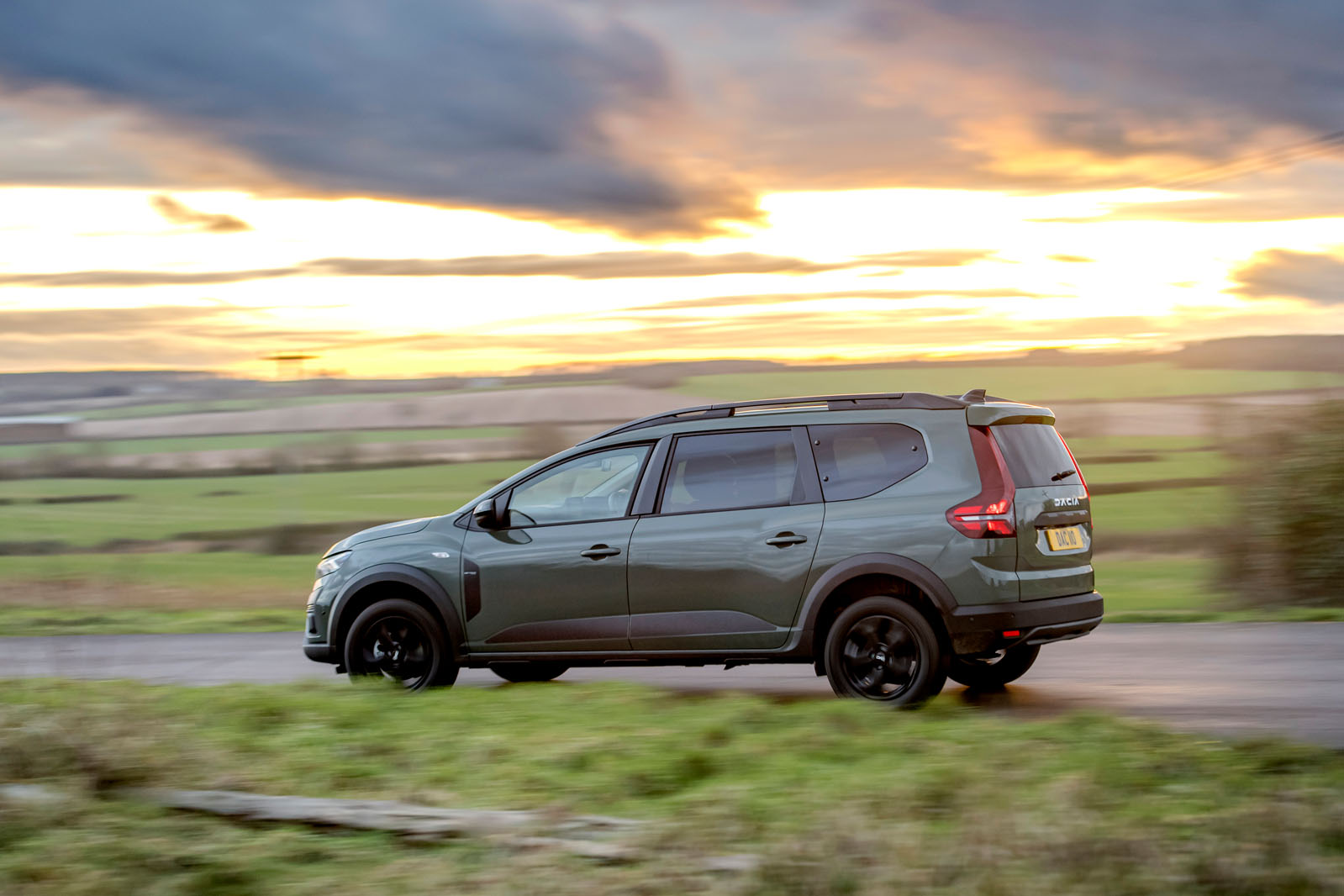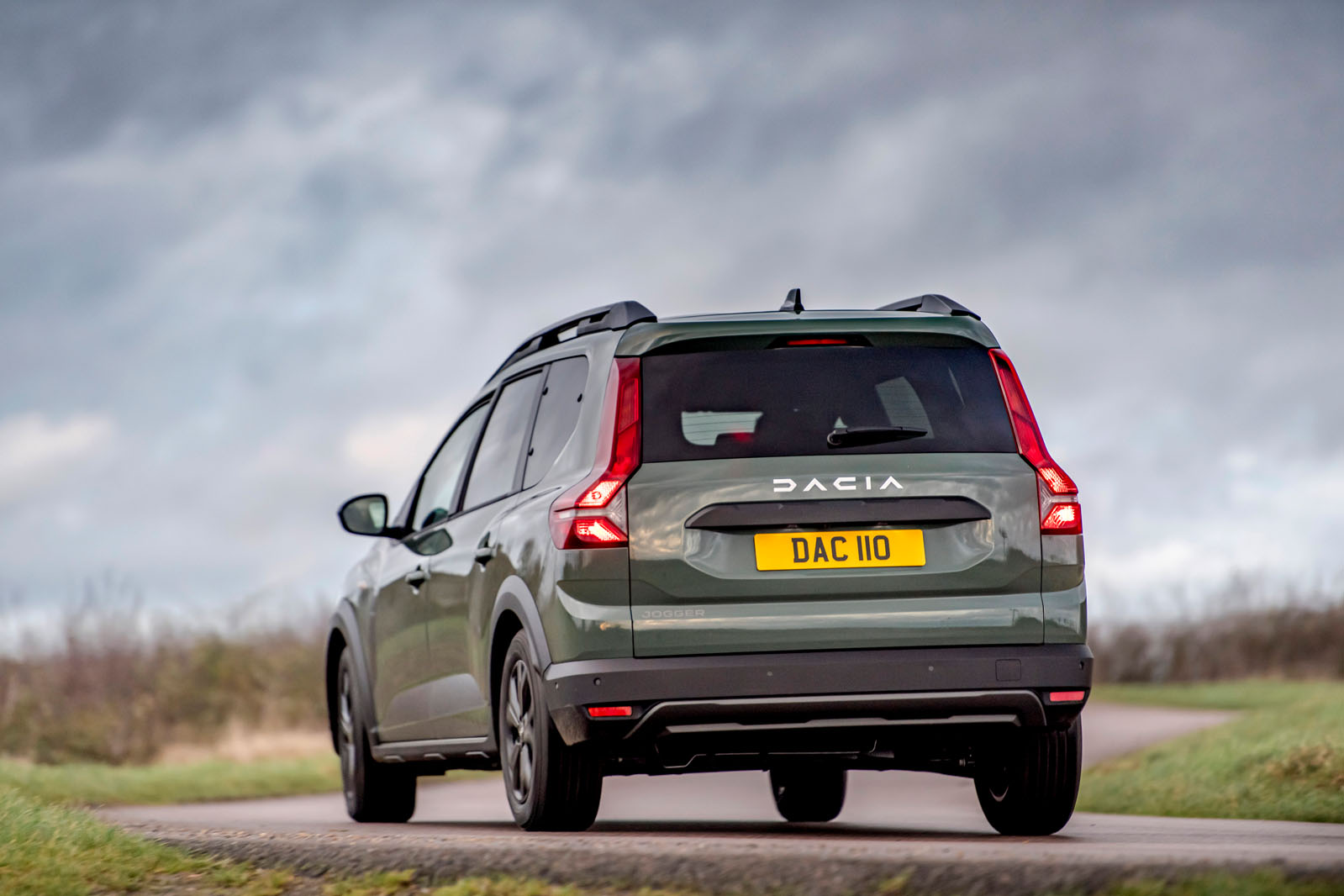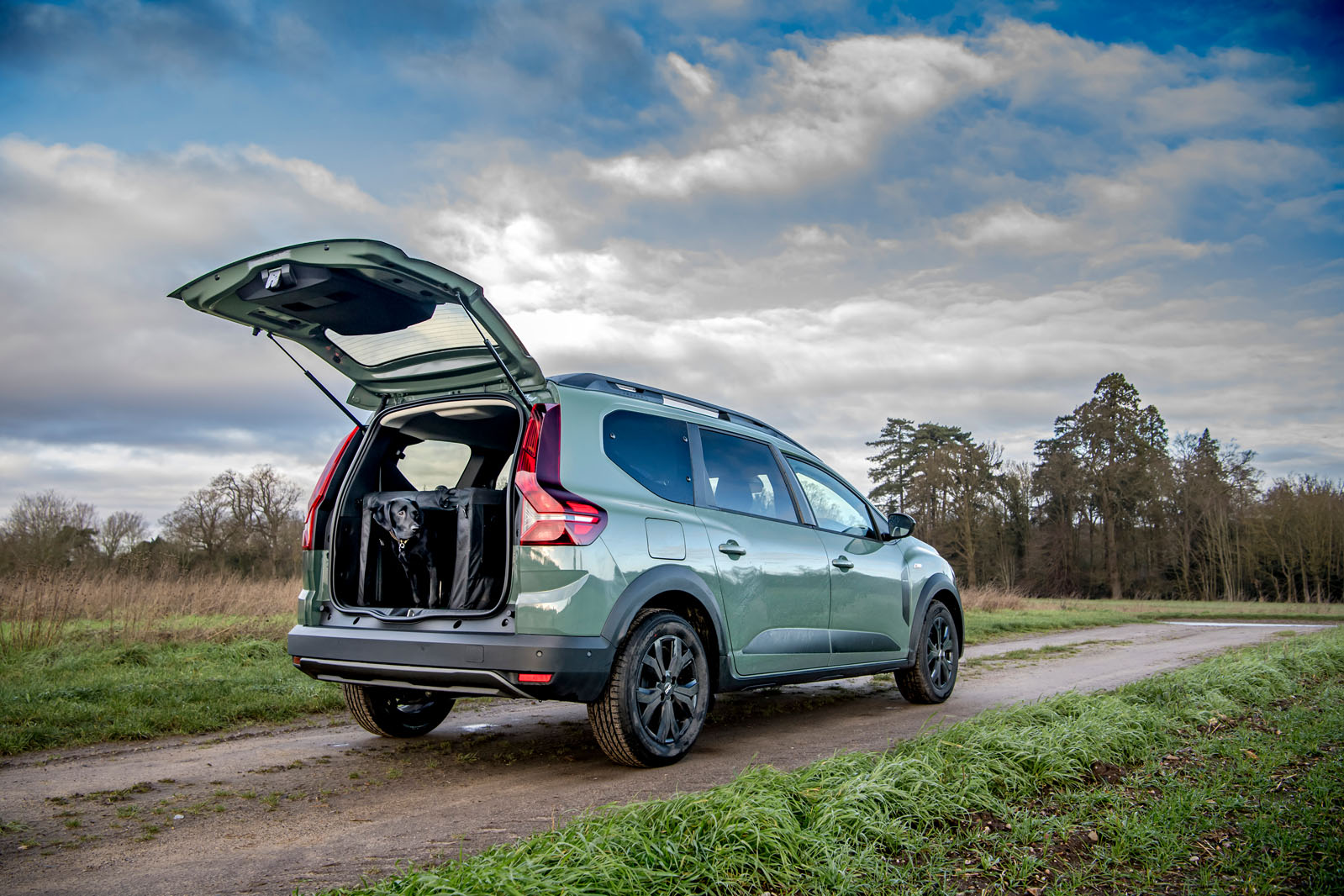The Jogger’s interior doesn’t make it the most spacious, adult-appropriate seven-seater family car you can buy, but so much could generally be observed about so many compact MPVs; and the Dacia is ingeniously versatile, more than passably pleasant, and well enough appointed and prepared for the practicalities of modern life.
You get a clear sense that this car is supermini-derived from the driving position, which is a little perched. Although it doesn’t offer abundant leg room for taller drivers, our tallest tester (6ft 3in) was still comfortable at the wheel.
The driver’s seat feels a little spongy in its cushioning and does without any adjustable lumbar support. It’s the kind of seat that threatens to put your backside to sleep over longer trips, even though it never did so for any of our testers.
Aft of that, the second-row seats are of a reasonable size and accessible height, offering decent head room but slightly limited knee and leg room for full-sized adults and Isofix child seat points on the outer two seats.
These seats are split 60:40, with the smaller, single seat directly behind the driver. Their backrests don’t just fold forwards, either. Rather, the whole seat tumbles forwards about the front edge of the base so that, when folded, two passengers can travel in the Jogger’s third row almost as if in a black cab.
Alternatively, you can lift the third-row chairs out of the car individually (the latches aren’t particularly fiddly and the seats surprisingly light) and open up a deep cargo space with a flat floor that, Dacia claims, is ready to accept more than 1800 litres of luggage. The spare wheel, where optioned, is carried underneath the car.
The Jogger’s interior quality surpasses most reasonable expectations. The cabin materials feel a little plain, hard and coarse in a few places, but the general standard of finish is very acceptable, given the price you’re paying.
It would be better if the passenger doors sounded a little less hollow as you close them; also, if the mouldings in the driver’s footwell were a little better secured, so that you couldn’t inadvertently work them loose with a stray left foot. There are some evident cost-related compromises here but nothing at all unpalatable.
Meanwhile, the car’s secondary features look after the necessities rather well. Oddment storage is very reasonable and there are 12V power sockets in all three rows. There are even proper cupholders, useful storage cubbies and partly opening windows for those in row three.
Dacia Jogger multimedia and sat-nav
There are three infotainment offerings in the Jogger. The base-level car comes with a DAB radio and a four-speaker audio system called Media Control, although there’s no central display screen for it. Instead, Dacia provides a dashboard dock for your smartphone, a nearby USB port for connectivity and an app through which you can connect it with the car’s wider systems.
Our mid-spec test car had Dacia’s Media Display system, which includes an 8.0in touchscreen of pretty simplified layout and functionality. There are separate heater controls and no fitted sat-nav. Wired device mirroring for Apple and Android phones is included, although it worked a little sporadically for us.
The system is fairly responsive and easy to use, with clear menu icons that aren’t small or hard to hit with an outstretched hand. DAB radio reception is only average and the audio system power a little meek, but neither is poor enough to annoy. The top spec is called Media Nav and adds factory sat-nav.


